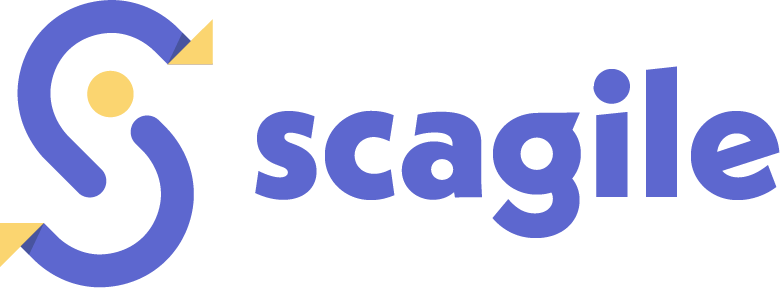Description

Easy Redmine

scagile
Comprehensive Overview: Easy Redmine vs scagile
Easy Redmine Overview
a) Primary Functions and Target Markets:
Primary Functions:
- Project Management: Easy Redmine offers comprehensive tools for project planning, execution, and evaluation. It supports Gantt charts, task management, time tracking, resource allocation, and more.
- Resource Management: It provides features for resource scheduling, utilization overview, and capacity planning.
- Task Management: Users can create tasks, assign them, set priorities, and track progress.
- Finance Management: There are tools for budgeting, cost management, and financial reporting.
- Integration & Customization: Easy Redmine can be integrated with various third-party tools and customized to fit specific needs.
Target Markets:
- Small to Medium Enterprises (SMEs)
- Large Enterprises
- IT and Software Companies
- Engineering and Construction firms
- Any industry requiring robust project management solutions
b) Market Share and User Base:
Easy Redmine positions itself as an integrated, customizable solution within the competitive project management software market. While it may not have as large a market share as industry giants like Microsoft Project or Jira, it has a dedicated user base, especially within industries that prefer a comprehensive, all-in-one solution.
c) Key Differentiating Factors:
- Customization and Integration: Easy Redmine is highly customizable and integrates well with other business tools, which is a significant advantage for businesses that require tailored solutions.
- All-in-One Solution: It consolidates various project management aspects under one platform, enhancing efficiency for businesses that need multiple functionalities in one tool.
- User-Friendly Interface: Known for its intuitive design, it is accessible to users with varying levels of technical expertise.
Scagile Overview
a) Primary Functions and Target Markets:
Primary Functions:
- Agile Project Management: Scagile specializes in agile methodologies such as Scrum and Kanban, offering tools for sprint planning, backlog management, and iterative progress tracking.
- Collaboration: It focuses on enhancing team collaboration through communication tools, file sharing, and real-time updates.
- Performance Metrics: Scagile features performance tracking and reporting tools to analyze team productivity and project outcomes.
Target Markets:
- Tech Startups
- Agile-focused Organizations
- Development Teams
- Mid-Market Businesses adopting agile methodologies
b) Market Share and User Base:
Scagile is a niche product targeted at companies and teams employing agile methodologies. It’s not as widely adopted as some comprehensive project management suites, but it has a steady user base among organizations committed to agile practices.
c) Key Differentiating Factors:
- Agile Focus: Unlike many generalist project management tools, Scagile is specifically tailored to support agile methodologies, making it an attractive choice for teams practicing Scrum or Kanban.
- Ease of Transition to Agile: Provides easy onboarding and adoption for teams transitioning to agile, offering tools and support tailored to such needs.
- Collaboration Emphasis: It places a strong emphasis on enhancing team collaboration with features like integrated communication tools.
Comparison Summary
- Target Audience: Easy Redmine’s scope is broader with features for a wider range of industries and project types. Scagile, however, is more specialized for agile practices.
- Functionality: Easy Redmine offers advanced functionalities suitable for managing complex and diverse projects, while Scagile excels in supporting and optimizing agile workflows.
- Market Presence: While neither product has the broad market share of larger enterprise solutions, Easy Redmine may have a slight edge in overall adoption due to its generalist appeal and comprehensive toolkit.
Both Easy Redmine and Scagile serve distinct niches within the project management space and cater to different needs within teams and organizations.
Contact Info

Year founded :
Not Available
Not Available
Not Available
Not Available
Not Available

Year founded :
2019
Not Available
Not Available
Switzerland
http://www.linkedin.com/company/scagile
Feature Similarity Breakdown: Easy Redmine, scagile
When comparing project management tools like Easy Redmine and Scagile, businesses and users tend to evaluate them based on core features, user interface (UI) design, and unique functionalities. Here's a breakdown of these aspects for Easy Redmine and Scagile:
a) Core Features in Common
Both Easy Redmine and Scagile offer a set of core features commonly found in project management software, including:
-
Task Management: Both platforms allow users to create, assign, and manage tasks, ensuring teams can keep track of project deliverables effectively.
-
Time Tracking: Easy Redmine and Scagile come equipped with time logging and tracking tools, helping teams keep an accurate record of time spent on various tasks and projects.
-
Resource Management: Each tool provides features for allocating and managing resources across projects, helping optimize team capabilities and project outcomes.
-
Reporting and Analytics: Users of both platforms can generate reports to gain insights into project performance and make data-driven decisions.
-
Collaboration Tools: Both systems include collaboration features such as file sharing, comments, and team communication channels to foster team collaboration.
-
Gantt Charts: Easy Redmine and Scagile offer Gantt chart functionality for project planning and timeline visualization, aiding in scheduling and progress tracking.
b) User Interface Comparison
-
Easy Redmine: Known for its comprehensive and versatile UI, Easy Redmine is designed to cater to detailed project management needs. It offers a visually rich interface with customizable dashboards, drag-and-drop functionality, and a variety of visual management tools. This can make it appealing to users who require intricate control over project details and wish to tailor the interface to fit their workflows.
-
Scagile: Often recognized for its simplicity and user-friendliness, Scagile provides an intuitive UI that emphasizes ease of use and quick adoption. The interface is streamlined, focusing on agility and efficiency, making it suitable for teams that prioritize speed and straightforward navigation over detailed customization.
c) Unique Features
-
Easy Redmine:
- Plugins and Integrations: Easy Redmine offers a wide range of plugins, allowing users to extend the software's capabilities with additional features like finance management, help desk, and advanced reporting.
- Mind Maps: A distinct feature that enables visual representation of project plans and ideas, supporting brainstorming and strategic planning.
-
Scagile:
- Agile Methodology Support: While Easy Redmine can support agile methodologies, Scagile places a particular emphasis on agile project management, providing dedicated features for Scrum and Kanban, which can be appealing for development teams focused on agile practices.
- Simplicity Focus: Scagile's design revolves around being exceptionally straightforward to set up and use, making it appealing to teams that need to deploy a project management tool quickly with minimal training.
In conclusion, while Easy Redmine and Scagile share several core functionalities, their differentiation lies in UI complexity and unique features—Easy Redmine offers a richer set of customizations and plugins, whereas Scagile focuses on simplicity and agile methodologies. This makes the choice between the two dependent on the specific needs and preferences of the user or organization.
Features

Not Available

Not Available
Best Fit Use Cases: Easy Redmine, scagile
Easy Redmine and Scagile are both project management tools, but they cater to different needs and scenarios. Here's a breakdown of their best-fit use cases and how they cater to different industry verticals or company sizes:
Easy Redmine
a) Best Fit Use Cases for Easy Redmine:
-
Types of Businesses or Projects:
- Medium to Large Enterprises: Easy Redmine is ideal for medium to large enterprises that require comprehensive project management solutions with robust features like Gantt charts, time tracking, resource management, and complex project planning.
- IT and Software Development: Companies in the tech industry often benefit from Easy Redmine’s strong IT and development tools, including bug and issue tracking systems, which help in managing intricate software development projects.
- Construction and Engineering: The tool is also well-suited for construction and engineering firms that need detailed project planning and KPI tracking features to manage multifaceted processes and timelines.
-
Scenarios:
- Enterprises Looking for Customization and Integrations: Organizations that require customized solutions and need the integration capabilities offered by Easy Redmine will find it beneficial.
- Resource-Intensive Projects: It's suitable for projects that require detailed resource management and capacity monitoring to optimize team performance.
d) Industry Verticals and Company Sizes:
- Industry Verticals: IT, construction, engineering, finance, education.
- Company Sizes: Especially beneficial for medium to large companies with complex project portfolios and resource management needs.
Scagile
b) Best Fit Use Cases for Scagile:
-
Types of Businesses or Projects:
- Startups and Small Businesses: Scagile works well for startups and small businesses looking for agile project management solutions with a focus on simplicity and flexibility.
- Agile Software Development Teams: Companies with agile teams benefit from Scagile’s focus on simplified agile workflows, making it easier to manage sprints, backlogs, and tasks.
- Creative and Marketing Projects: Ideal for teams involved in marketing, design, and other creative projects that require iterative processes and quick pivots.
-
Scenarios:
- Teams Embracing Agile Methodologies: Scagile is perfect for teams fully embracing agile methodologies and who prioritize adaptability and speed over comprehensive enterprise features.
- Lean Project Management Needs: Suitable for organizations that need a lean, collaborative project management tool that can be set up quickly without extensive configuration.
d) Industry Verticals and Company Sizes:
- Industry Verticals: Technology, marketing, creative industries, startups.
- Company Sizes: Primarily targets small to medium-sized businesses that operate in fast-paced environments and require agile project management solutions.
In summary, Easy Redmine is best for more traditional project management needs within larger and resource-intensive organizations, while Scagile excels in environments where agile methodologies are prioritized, mainly among smaller and more dynamic teams. Each tool reflects the differing priorities and operational styles associated with their target user bases.
Pricing

Pricing Not Available

Pricing Not Available
Metrics History
Metrics History
Comparing undefined across companies
Conclusion & Final Verdict: Easy Redmine vs scagile
To provide a conclusive analysis and a final verdict on Easy Redmine and Scagile, let's delve into each aspect mentioned:
Conclusion and Final Verdict:
a) Value Assessment:
Easy Redmine generally offers robust project management features with comprehensive tools tailored for larger organizations seeking extensive customization and integration capabilities. It might appeal more to enterprises due to its scalability and feature-rich environment.
Scagile, on the other hand, emphasizes flexibility and adaptability, offering services that are precise and efficient for agile project management. It’s particularly attractive for teams that prioritize lean operations with agile methodology without the need for extensive infrastructure.
Best Overall Value:
- Easy Redmine might provide better value for larger enterprises requiring a wide array of functionalities and scalability options.
- Scagile could prove to be better value for teams focused on agile practices and who prefer a lean, more interactive approach.
b) Pros and Cons:
Easy Redmine:
- Pros:
- Extensive feature set covering various project management needs.
- Highly customizable user interface and reporting features.
- Integration capability with numerous third-party applications.
- Strong support and community forums.
- Cons:
- Steeper learning curve due to extensive features.
- Potentially higher cost for the full feature set, which may not be ideal for smaller teams or startups.
- Could be overwhelming for teams specifically looking for agile-oriented tools.
Scagile:
- Pros:
- Strong focus on agile project management with intuitive workflows.
- Easier to set up and use, especially for teams familiar with agile methodologies.
- Cost-effective for small to medium teams focusing on agile practices.
- Encourages collaboration and real-time updates in projects.
- Cons:
- May lack some of the extensive features or depth of integration options found in more comprehensive tools like Easy Redmine.
- Limited scalability for very large or complex operations that require extensive customization.
c) Recommendations for Users Deciding Between Easy Redmine and Scagile:
-
Evaluate Team Size and Needs: Larger enterprises with complex project requirements might benefit more from Easy Redmine due to its extensive features and scalability. Meanwhile, smaller or medium-sized teams focused on implementing agile methodologies might find Scagile to be sufficient and efficient.
-
Consider Budget and Resource Allocation: If budget is a constraint, and the need is primarily agile, Scagile offers a simpler and more cost-effective solution. Conversely, if the budget allows and the need for a rich set of features is high, Easy Redmine could be the right choice.
-
Assess Long-Term Goals: Teams with clear long-term goals to transition towards more agile practices would benefit from Scagile. However, if the plan includes scaling up operations with a more controlled environment, Easy Redmine might be preferable.
-
Trial Period and User Feedback: Both tools offer a chance to trial the software. It's crucial to involve key stakeholders during this phase and gather feedback to ensure the tool aligns well with the team's workflow and objectives.
In conclusion, the best choice largely depends on the specific needs and goals of the organization. Both Easy Redmine and Scagile offer distinct advantages tailored to diverse project management needs. Users are encouraged to carefully assess their current and future requirements to make an informed decision.
Add to compare
Add similar companies




